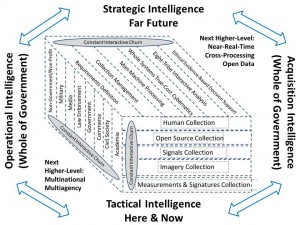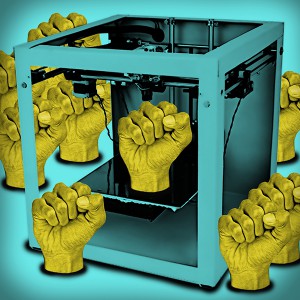
Slide: 21st Century Process Updated
See Also:

Slide: 21st Century Process Updated
See Also:
![]() America’s infrastructure grade: D+
America’s infrastructure grade: D+
The country received a D+ in the American Society of Civil Engineers’ (ASCE) report card for American infrastructure. That’s somewhere between “mediocre” and “poor,” according to their rating.
Optimists, take comfort: this is actually an improvement; last time the report was published, in 2009, the country received a D.
The ASCE reckons America would need $3.6 trillion worth of investment to bring infrastructure up to speed by 2020, significantly more than the $2 trillion currently dedicated.
Compared to measures spanning water and environment, transportation, public facilities, and energy, inland waterways and levees came in last, both with a D- grade. The backbone of the country’s freight network, these waterway systems have not been updated since the 1950s, and projected investment is stagnant. While levees were said to have prevented more than $141 billion in flood damages in 2011, many of the country’s levees are aging, unreliable, and would cost around $100 billion to repair.
On the brighter side, our railways and bridges earned a C+, the highest marks given out. While the overall number of structurally deficient bridges in the country continues to fall, the average age of the country’s 607,380 bridges is 42 years, and the Federal Highway Administration estimates $20.5 billion would need to be invested annually to eliminate the backlog by 2028 — compared to the $12.8 billion current annual spending.
As rail gains popularity as a viable – and energy-efficient – transport option for both freight and passengers, Amtrak has nearly doubled its ridership since 2000, with a ridership of 31.2 million passengers in 2012. Since 2009, capital investment in railroads has exceeded $75 billion – with investment actually increased during the recession.
Left untended, infrastructure lapses can significantly slow down the economy. Perhaps these grades will help spur investment in the areas that need it most.

A Research Framework for Next Generation Humanitarian Technology and Innovation
Humanitarian donors and organizations are increasingly championing innovation and the use of new technologies for humanitarian response. DfID, for example, is committed to using “innovative techniques and technologies more routinely in humanitarian response” (2011). In a more recent strategy paper, DfID confirmed that it would “continue to invest in new technologies” (2012). ALNAP’s important report on “The State of the Humanitarian System” documents the shift towards greater innovation, “with new funds and mechanisms designed to study and support innovation in humanitarian programming” (2012). A forthcoming land-mark study by OCHA makes the strongest case yet for the use and early adoption of new technologies for humanitarian response (2013).
These strategic policy documents are game-changers and pivotal to ushering in the next wave of humanitarian technology and innovation. That said, the reports are limited by the very fact that the authors are humanitarian professionals and thus not necessarily familiar with the field of advanced computing. The purpose of this post is therefore to set out a more detailed research framework for next generation humanitarian technology and innovation—one with a strong focus on information systems for crisis response and management.

Have no idea what this means:
The CIA Is About To Sign A Game-Changing $600 Million Deal With Amazon
The CIA is on the verge of signing a cloud computing contract with Amazon, worth up to $600 million over 10 years, reports Frank Konkel at Federal Computer Week.
If the details about this deal are true, it could be a game-changer for the enterprise cloud market.
That's because Amazon Web Services will help the CIA build a “private cloud” filled with technologies like big data, reports Konkel, citing unnamed sources.
The CIA is pretty closed-lipped about its business, as spies are apt to be. This is no exception. It won't confirm the deal or comment on it, so details are sketchy. But the contract is expected to be for a “private” cloud, which is not what AWS is known for.
AWS is the largest “public” cloud provider. In general, the term “private cloud” means using cloud computing technologies in a company's own data center. Public clouds are in hosted facilities, where the hardware is shared with many users. Sharing the hardware saves money.

Opening World Bank Data with QCRI’s GeoTagger
My colleagues and I at QCRI partnered with the World Bank several months ago to develop an automated GeoTagger platform to increase the transparency and accountability of international development projects by accelerating the process of opening key development and finance data. We are proud to launch the first version of the GeoTagger platform today. The project builds on the Bank’s Open Data Initiatives promoted by former President, Robert Zoellick, and continued under the current leadership of Dr. Jim Yong Kim.
The Bank has accumulated an extensive amount of socio-economic data as well as a massive amount of data on Bank-sponsored development projects worldwide. Much of this data, however, is not directly usable by the general public due to numerous data format, quality and access issues. The Bank therefore launched their “Mapping for Results” initiative to visualize the location of Bank-financed projects to better monitor development impact, improve aid effectiveness and coordination while enhancing transparency and social accountability. The geo-tagging of this data, however, has been especially time-consuming and tedious. Numerous interns were required to manually read through tens of thousands of dense World Bank project documentation, safeguard documents and results reports to identify and geocode exact project locations. But there are hundreds of thousands of such PDF documents. To make matters worse, these documents make seemingly “random” passing references to project locations, with no sign of any standardized reporting structure whatsoever.

Letters at 3AM: The Revolution Will Be Printed
Digital fabrication will change the course of the future
The Austin Chronicle, 8 February 2013
That headline has been digitally duplicated (plagiarized) from David Bjerklie's essay in Time‘s special edition: “100 New Scientific Discoveries.” Bjerklie's headline says it all.
Three-dimensional manufacturing is the making of something out of practically nothing. This technology accelerates as we speak. Bjerklie reports that there is only one retail outlet that sells 3-D printers, MakerBot in New York City. Only one, but it had sold 15,000 3-D printers by late 2012.
Every new article on the subject reports something you never dreamed of. A week ago, I didn't know that 3-D printers could make food.

Bjerklie writes of “a pork chop … produced by a bioprinter equipped with pig-cell ink that had been grown in vitro.” Scientists are working on “3-D printed meat” that “could lessen the environmental impact and ethical objections of raising meat the old-fashioned way.” The 3-D process would be lots cheaper than herding cows. The Great American Cowboy, or what's left of him, may ride off into the sunset for keeps.
Like most writers on the subject, Bjerklie quotes a researcher's warning. In this case, it's Michael Idelchik, vice president for advanced technologies at GE Global Research. Idelchik cautions that 3-D printing “has the potential to fundamentally disrupt” all that we take for granted.
The real eye-opener is Professor Neil Gershenfeld's lengthy essay in Foreign Affairs (Nov.-Dec. 2012). Professor Gershenfeld is not a journalist. He is a scientist, the leader of the Massachusetts Institute of Technology's Center for Bits and Atoms. “Cutting edge” is a clichéd usage, but not in Gershenfeld's case. His Center is the knife point of the cutting edge. He subtitles his essay: “The Digital Fabrication Revolution.”
Here's the long and the short of it, in Gershenfeld's words: “Digital fabrication will allow individuals to design and produce tangible objects on demand, wherever and whenever they need them.”
 “Open Source Ecology founder Dr. Marcin Jakubowski and the OSE team explain the philosophy behind their work. Special thanks to our remote collaborators Tom Griffing, Zach Dwiel and William Neal.”
“Open Source Ecology founder Dr. Marcin Jakubowski and the OSE team explain the philosophy behind their work. Special thanks to our remote collaborators Tom Griffing, Zach Dwiel and William Neal.”
Open Source Ecology: Still going strong in 2013. The Global Village Construction Set is ever-evolving. The CEB-Press (Liberator), Lifetrac Tractor, and Hydraulic Power Cube are already fully operational and helping to lay the foundations for the Open Source Economy.
See Also: